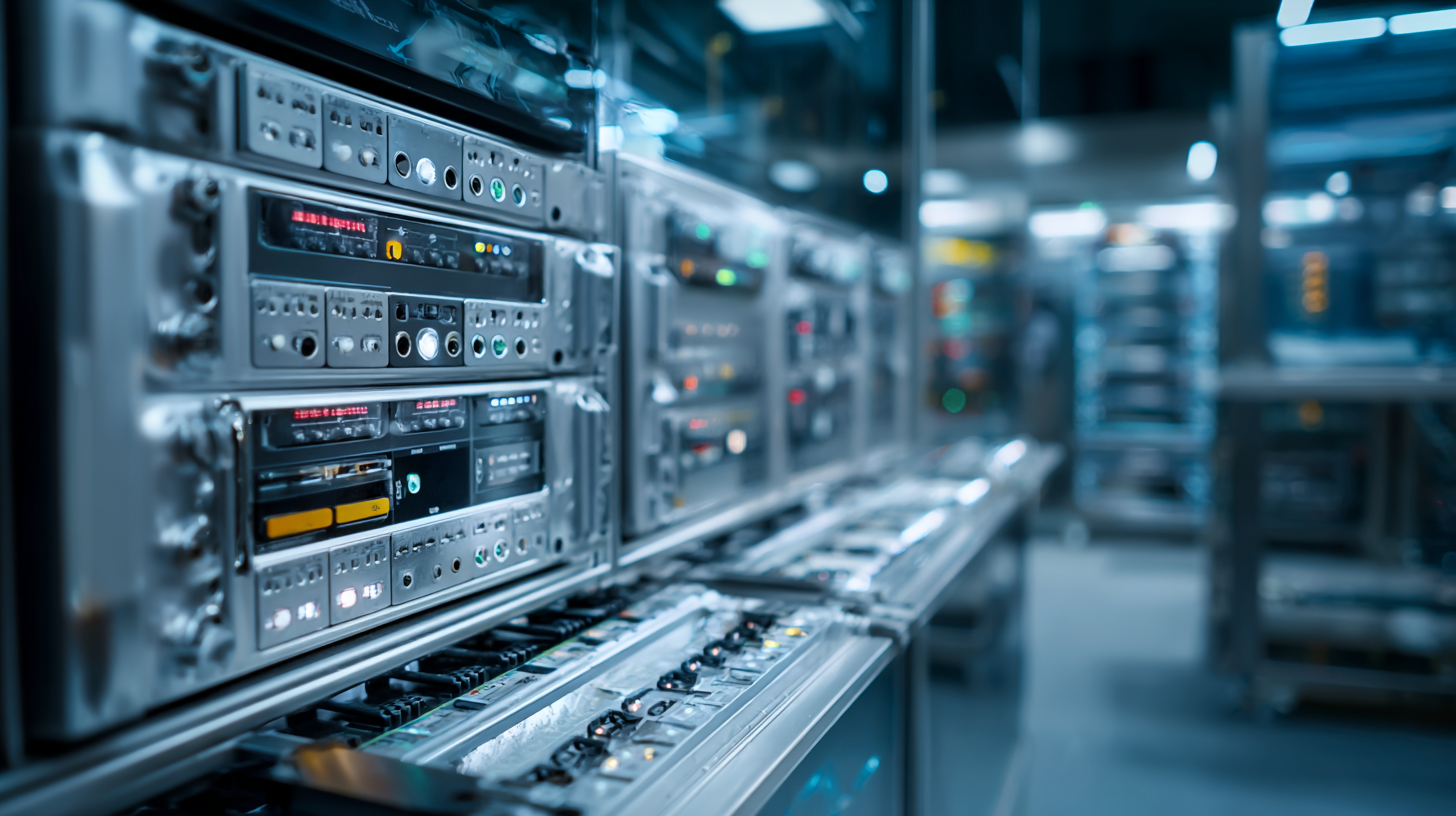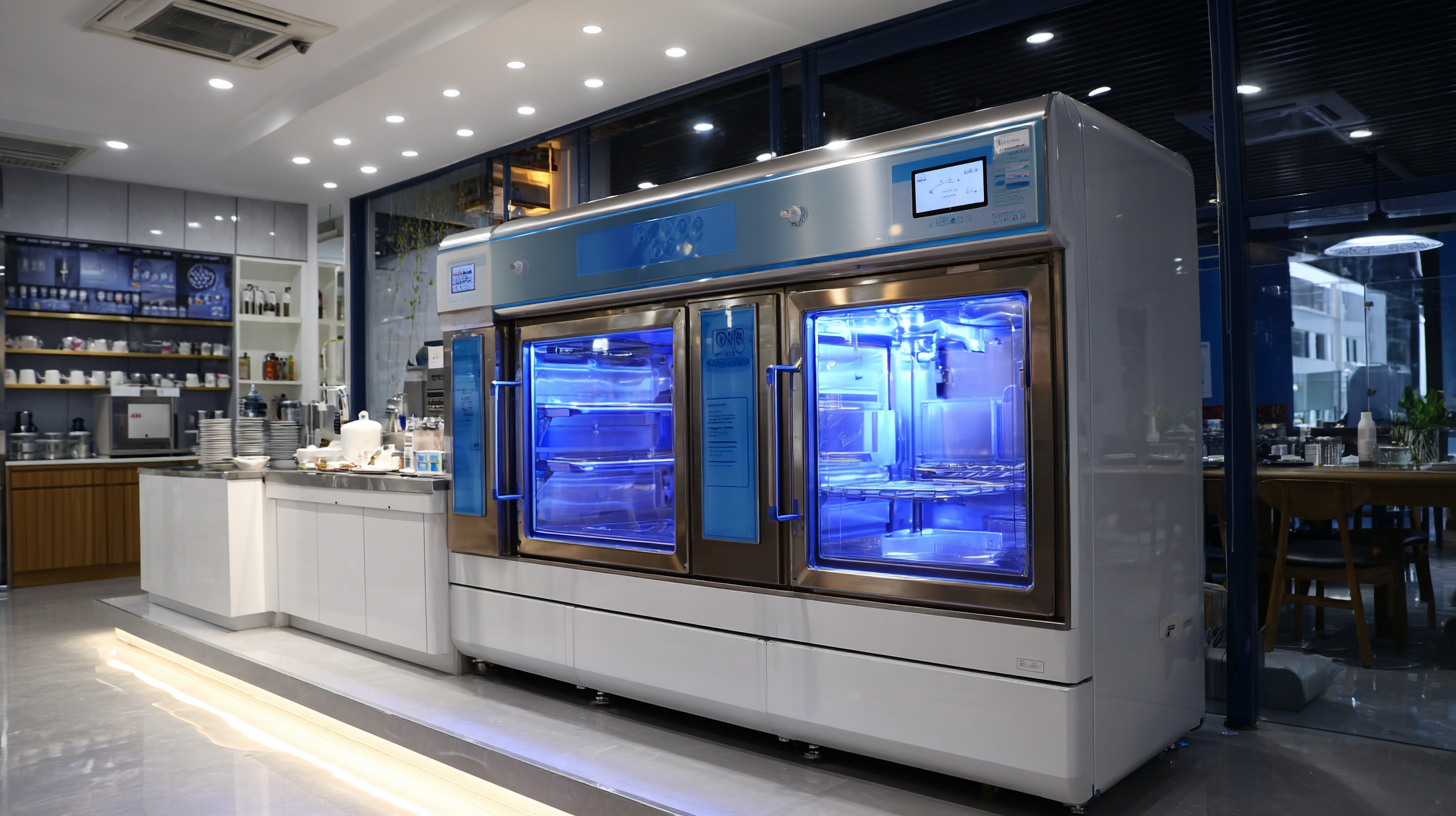Exploring Technological Innovations in Best Commercial Equipment for Global Buyers in 2025
As we move towards 2025, the landscape of commercial equipment is undergoing significant transformation fueled by rapid technological innovations. This evolution is not merely a trend but a pivotal shift that is reshaping how global buyers make purchasing decisions. In a world increasingly reliant on efficiency and sustainability, the latest advancements in commercial equipment promise to enhance productivity, streamline operations, and reduce environmental impact.

From smart machinery equipped with AI capabilities to groundbreaking energy-efficient designs, the choices available to businesses are expanding and becoming more sophisticated. This blog will explore the exciting developments in commercial equipment, focusing on key innovations that are set to redefine industry standards and cater to the needs of diverse sectors. Join us as we delve into the future of commercial equipment and discover what global buyers can expect in the years ahead.
Trends Shaping the Future of Commercial Equipment Industry Standards in 2025
The commercial equipment industry is on the brink of transformative changes as we approach 2025. One of the most significant trends shaping this evolution is the integration of artificial intelligence and machine learning into equipment functionalities. These technologies not only enhance operational efficiency but also provide valuable data analytics for businesses, helping them make informed decisions based on real-time performance metrics. As companies increasingly seek smarter solutions, the demand for AI-driven equipment will undoubtedly rise, setting new standards for performance and reliability.

Another notable trend is the growing focus on sustainability and eco-friendly designs. In response to global environmental concerns, manufacturers are prioritizing the development of energy-efficient and recyclable materials for their products. This shift not only meets regulatory pressures but also aligns with the consumer preference for sustainable options. By 2025, we can expect to see a broader adoption of green technologies, leading to more responsible consumption patterns in the commercial sector and reshaping industry norms for years to come.
Innovative Technologies Revolutionizing Global Commercial Equipment Markets
The commercial equipment market is undergoing a remarkable transformation, driven by innovative technologies that are reshaping how businesses operate. In 2025, advancements like artificial intelligence, IoT, and automation are not just enhancing operational efficiency but are also providing global buyers with more tailored solutions. For instance, AI-driven analytics allow companies to forecast demand accurately, thereby optimizing inventory management and reducing waste.

Moreover, the integration of IoT devices into commercial equipment enables seamless connectivity and real-time monitoring. This innovation empowers businesses to make informed decisions on equipment usage, improving maintenance schedules and enhancing productivity. As global buyers look to invest in the best commercial equipment, the emphasis on sustainability is also becoming pivotal. Energy-efficient technologies and eco-friendly materials are becoming a priority, aligning with the growing trend toward corporate responsibility and sustainable practices in the global market.
These innovations are not only setting new standards for performance but are also fostering a competitive edge for businesses aiming to thrive in an increasingly digital and environmentally conscious marketplace.
Sustainable Practices in Equipment Production: Meeting Future Industry Standards
As we look towards 2025, sustainable practices in equipment production are becoming increasingly essential. The pressure on industries to minimize their environmental footprint has led to a significant shift in how commercial equipment is designed and manufactured. Companies are now prioritizing eco-friendly materials and energy-efficient processes, ensuring that the equipment not only meets operational demands but also aligns with evolving ecological standards. This commitment to sustainability drives innovation, leading to the development of equipment that is not only durable but also contributes to a circular economy.
Moreover, the implementation of sustainable practices extends beyond material selection; it encompasses the entire lifecycle of the equipment. Manufacturers are investing in technologies that facilitate recyclability and reduce waste, alongside developing robust maintenance protocols that extend the lifespan of their products. By integrating these principles, businesses can not only enhance their market appeal but also comply with forthcoming regulations and consumer expectations. As global buyers become more discerning in their choices, the shift towards sustainable equipment production will be pivotal in shaping the future of the industry.
The Role of Automation in Enhancing Commercial Equipment Efficiency
As we move towards 2025, the role of automation in enhancing the efficiency of commercial equipment is becoming increasingly significant. Businesses around the globe are seeking innovative solutions that not only streamline operations but also reduce labor costs and improve productivity. Automation technologies such as AI and machine learning are paving the way for smarter commercial equipment, enabling real-time data analysis and decision-making processes that were previously inconceivable.
In sectors ranging from manufacturing to food services, automated equipment can handle repetitive tasks with precision and speed. These innovations reduce the likelihood of human error, ensuring consistent quality and reliability in production. Additionally, advanced robotics can work around the clock, thereby increasing throughput and helping companies keep pace with growing demand. As global buyers consider investments in commercial equipment, the integration of automation will be a crucial factor in their decision-making process, ensuring that their operations are not just efficient, but also future-ready.
Exploring Technological Innovations in Best Commercial Equipment for Global Buyers in 2025 - The Role of Automation in Enhancing Commercial Equipment Efficiency
| Equipment Type | Technological Innovation | Efficiency Improvement (%) | Automation Features | Expected Market Growth (%) |
|---|---|---|---|---|
| Smart Refrigerators | IoT Connectivity | 20 | Remote Monitoring | 15 |
| Automated Cooking Systems | AI Recipe Adjustment | 25 | Touchless Operation | 20 |
| Smart Ovens | Voice Activation | 30 | App Control | 18 |
| Robotic Cleaning Equipment | Path Optimization | 40 | Self-Detection | 25 |
| Inventory Management Systems | Real-time Tracking | 35 | Predictive Analytics | 22 |
Global Buyer Preferences: Navigating Standards and Innovations in Equipment Selection
As global buyers increasingly seek to optimize their investment in commercial equipment, understanding the nuances of standards and innovations becomes paramount. In 2025, buyer preferences will not only be influenced by technological advancements but also by compliance with international quality standards. Buyers will prioritize equipment that meets safety regulations, efficiency benchmarks, and environmental sustainability guidelines, all of which are essential in today's market.
Moreover, as businesses pivot towards sustainable practices, innovations like smart technologies and energy-efficient systems will play a crucial role in decision-making processes. The integration of IoT devices into commercial equipment allows for real-time monitoring and analytics, empowering buyers to make informed choices tailored to their specific needs. As such, understanding the balance between cutting-edge innovation and adherence to globally recognized standards will be critical for buyers navigating the complex landscape of commercial equipment in 2025.
